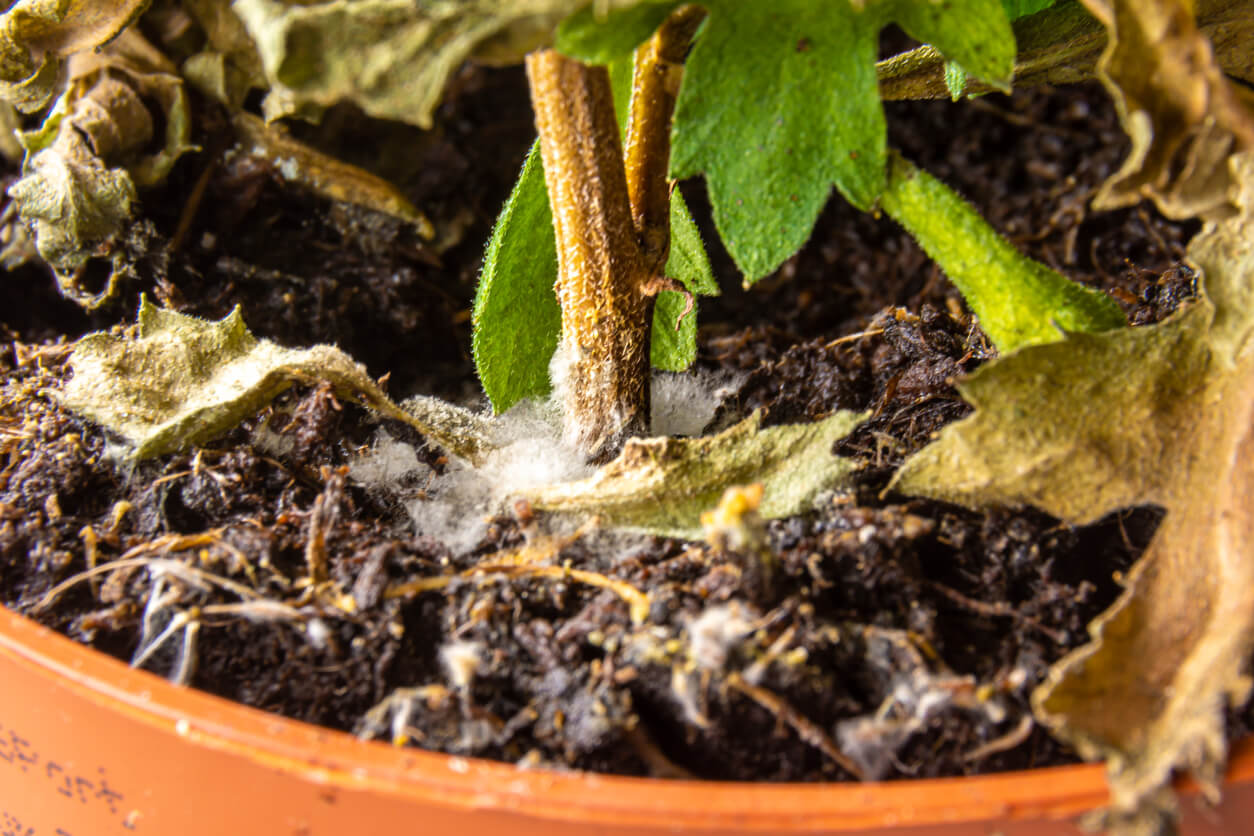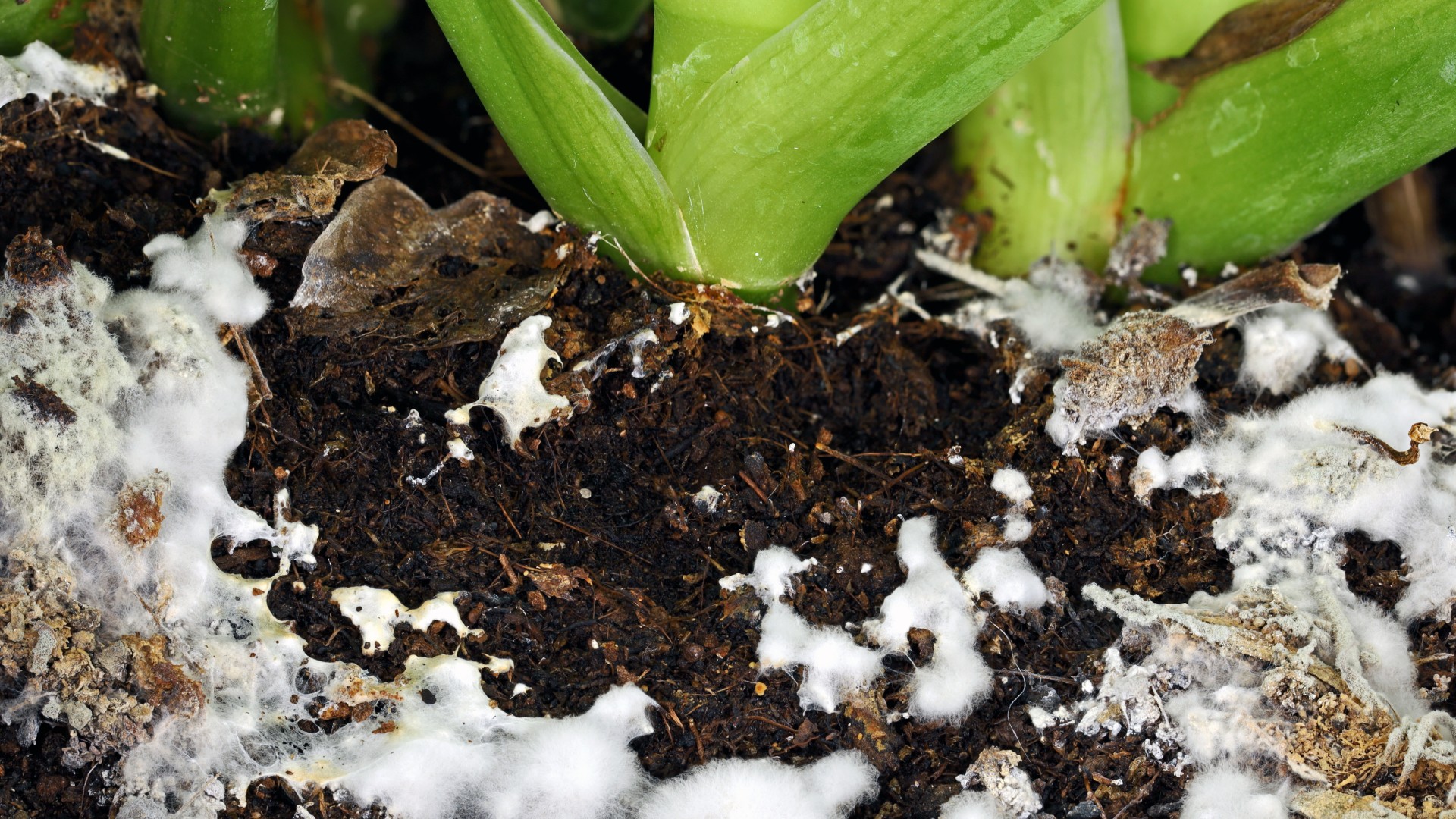
White mold
Sclerotinia sp.
Pathogen:
Fungus
Type:
Risk:
CRITICAL
Moho blanco
Plantas decorativas de jardín y/o interior


WHO CAUSES IT?
Sclerotinia sp. It is a pathogenic fungus that lives in soil and plant remains, where it survives in the form of sclerotia, compact, black and hard resistance structures. These sclerotia can persist in the soil for several years until environmental conditions are favorable for their germination. When there is sufficient humidity and moderate temperatures, sclerotia germinate forming apothecia, small cup-shaped structures that release millions of spores into the environment. These spores, carried by wind or water, settle on moist plant tissues and begin infection. The fungus colonizes the superficial tissues and then penetrates the internal tissues, causing necrosis and decay. As it progresses, it produces cottony white mycelium and new sclerotia, restarting the cycle. This process is favored by conditions of high humidity, low ventilation and the presence of senescent or damaged tissues.
SYMPTOMS
White mold is a disease caused by Sclerotinia sp. which affects numerous plants, including horticultural, ornamental and wild species. Infections usually begin in floral tissues, leaves or stems, and progress to other parts of the plant. The fungus rapidly invades tissues, causing wet rot, weakening and collapse of structures. Humid conditions favor the appearance of white mycelium and visible sclerotia, which facilitates their visual identification.
- Appearance of white cottony mycelium on stems and leaves
- Wet rot in infected areas
- Wilting and collapse of aerial parts
- Formation of black sclerotia on stems, leaves or fruits
- Watery stains that spread rapidly
- Necrosis of the affected plant tissue
- Premature fall of flowers or fruits
- Bad smell associated with decomposition

TEMPERATURE AND HUMIDITY
15°C - 25°C
80% - 100%
TRANSMISSION ROUTES
Contaminated soil, Infected plant remains, Sclerotia, Wind-borne spores, Irrigation water, Agricultural tools
Do you want to remove this pest? Choose how you want to treat it.
TREATMENTS
Chemical treatments
Authorized treatments in organic farming
Biological control
Recommendations
- Use resistant or tolerant varieties when available
- Avoid excess watering and improve soil drainage to reduce environmental humidity
- Remove plant remains at the end of the crop and destroy affected plants to reduce the presence of sclerotia.
- Avoid too dense crops that limit ventilation between plants
- Alternate crops with non-host species for several years to reduce the pathogen load in the soil
- Apply specific fungicides preventively, especially in flowering stages and high humidity conditions.
- Disinfect tools and machinery after working in affected areas
- Use organic or synthetic mulch to reduce contact of the fungus with the aerial parts of the plant.
- Promote the activity of antagonistic microorganisms through biological products
- Avoid unnecessary injuries during plant handling
Sponsored link
Sponsored link
Sponsored link
Sponsored link
Sponsored link
Sponsored link
Effective against all types of fungi
TREATMENTS
Homemade remedies
There are no home treatments
Natural allies
Chemical treatments
There are no treatments for this disease. Treatments are directed at the insect vectors that transmit it. See insect treatments.
RECOMMENDATIONS
- Check the back of the leaves frequently, especially in dry weather.
- Spray water on the leaves to increase humidity and prevent them from settling.
- Keep plants healthy with good watering and adequate light.
- If you see cobwebs or damage, clean the leaves with a damp cloth or pressurized water.
- Use potassium soap or neem oil every few days until they disappear.
REPELLENT PLANTS
Rosemary, Dill, Coriander
EFFECTIVE PRODUCTS TO ELIMINATE THIS PEST
Sponsored link
Sponsored link
Sponsored link
Sponsored link
Sponsored link
Sponsored link
Effective against all types of fungi
*Recommended treatments are still recommendations according to authority databases and in no way replace the guidelines established according to the legislation of each country.
*Products shown are recommendations and not our own products. As Amazon Associates, we earn revenue from purchases of recommended products.






















